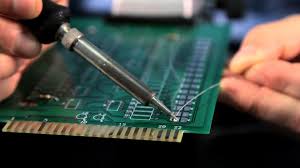
Breaking News
 In my new documentary, Never in America, we pull back the curtain on one of the darkest corners...
In my new documentary, Never in America, we pull back the curtain on one of the darkest corners...
 I just watched what they did to the King family in Washington, and I couldn't stop thinking:
I just watched what they did to the King family in Washington, and I couldn't stop thinking:
 The Superfood They Turned Into a Weed: Why Is It Illegal to Grow This?
The Superfood They Turned Into a Weed: Why Is It Illegal to Grow This?
 Rep. Marjorie Taylor Greene details ''death threats directly fueled by President Trump'
Rep. Marjorie Taylor Greene details ''death threats directly fueled by President Trump'
Top Tech News
 Build a Greenhouse HEATER that Lasts 10-15 DAYS!
Build a Greenhouse HEATER that Lasts 10-15 DAYS!
 Look at the genius idea he came up with using this tank that nobody wanted
Look at the genius idea he came up with using this tank that nobody wanted
 Latest Comet 3I Atlas Anomolies Like the Impossible 600,000 Mile Long Sunward Tail
Latest Comet 3I Atlas Anomolies Like the Impossible 600,000 Mile Long Sunward Tail
 Tesla Just Opened Its Biggest Supercharger Station Ever--And It's Powered By Solar And Batteries
Tesla Just Opened Its Biggest Supercharger Station Ever--And It's Powered By Solar And Batteries
 Your body already knows how to regrow limbs. We just haven't figured out how to turn it on yet.
Your body already knows how to regrow limbs. We just haven't figured out how to turn it on yet.
 We've wiretapped the gut-brain hotline to decode signals driving disease
We've wiretapped the gut-brain hotline to decode signals driving disease
 3D-printable concrete alternative hardens in three days, not four weeks
3D-printable concrete alternative hardens in three days, not four weeks
 Could satellite-beaming planes and airships make SpaceX's Starlink obsolete?
Could satellite-beaming planes and airships make SpaceX's Starlink obsolete?
The Art of Soldering

A version of this post originally appeared on Tedium, a twice-weekly newsletter that hunts for the end of the long tail.
A lot of people use electronics with little to no idea of what actually happens inside of the little box they have on their desk or in their pockets.
Sure, we might talk about the chips inside of that machine, or the processing power, but rarely do we think about the connective tissue holding many of the circuits onto the silicon.
That tissue is solder, the meltable filler metal that has existed in one form or another for more than 4,000 years—long before electronics even existed as a modern context.
But in an era where that fillable metal shows up in just about everything as a way to push power through our machines and bond circuits to silicon, even if it's not necessarily doing any of the processing of our computing, makes it important to discuss—especially as it's considered one of the artistic elements of electronics engineering.
Let's talk about the art of soldering. Yes, it's an art.
Why soldering proved an important limitation for the world of technology
The technical manual Quality Hand Soldering & Circuit Board Repair sounds like the kind of work that is designed to put you to sleep—especially if you don't know how to solder.
But if you turn it to the preface, you might be shocked to find one of the most enthralling stories this side of Chesley "Sully" Sullenberger. The 1983 crash landing of a Boeing 767 jet near Gimli, Manitoba, Canada, involved the pilot successfully "gliding" the plane to the ground because it had run out of fuel.
The crash happened for multiple strange reasons, including the fact that the country's aviation system had recently switched to the metric system and someone forgot to tell the person who put in the fuel.
But the reason why Quality Hand Soldering author H. (Ted) Smith (yes, the "Ted" is in parenthesis) cares? The fuel error wasn't caught right away, because the fuel gauge was on the fritz. Why was the fuel gauge on the fritz? Bad soldering, of course. It's a dramatic example in a book about a not-very-dramatic topic.
Suffice it to say, electronics folks take their soldering seriously. Another example: Whenever soon-to-retire YouTube electronics expert Ben Heck does a soldering video, the comments are inevitably full of people criticizing both his soldering technique and the fact that, like every other American electronics engineer, he says "saw-der," not "sol-der." (Heck can brush off the complaints because he built this.)

 First totally synthetic human brain model has been realized
First totally synthetic human brain model has been realized Mach-23 potato gun to shoot satellites into space
Mach-23 potato gun to shoot satellites into space

